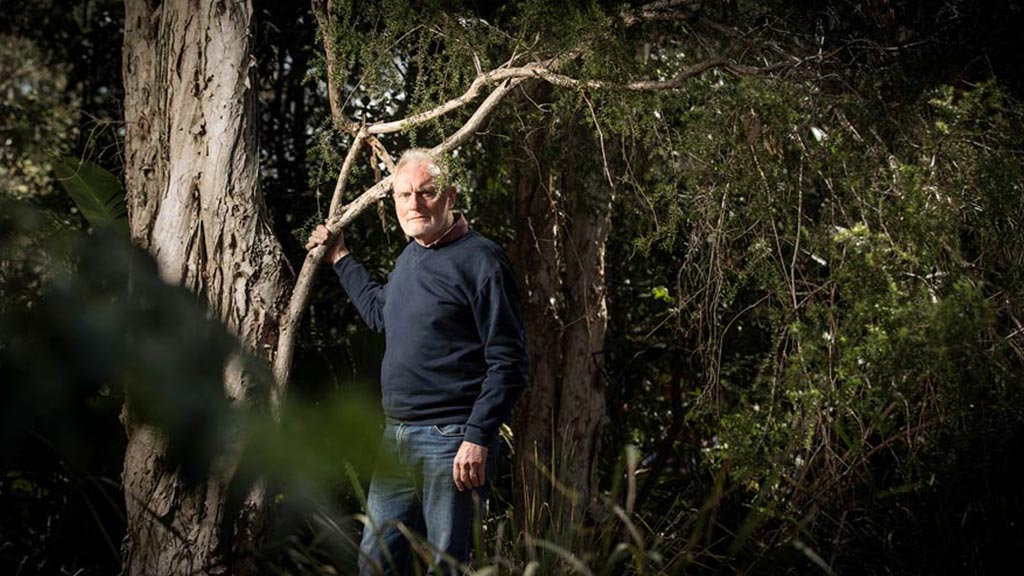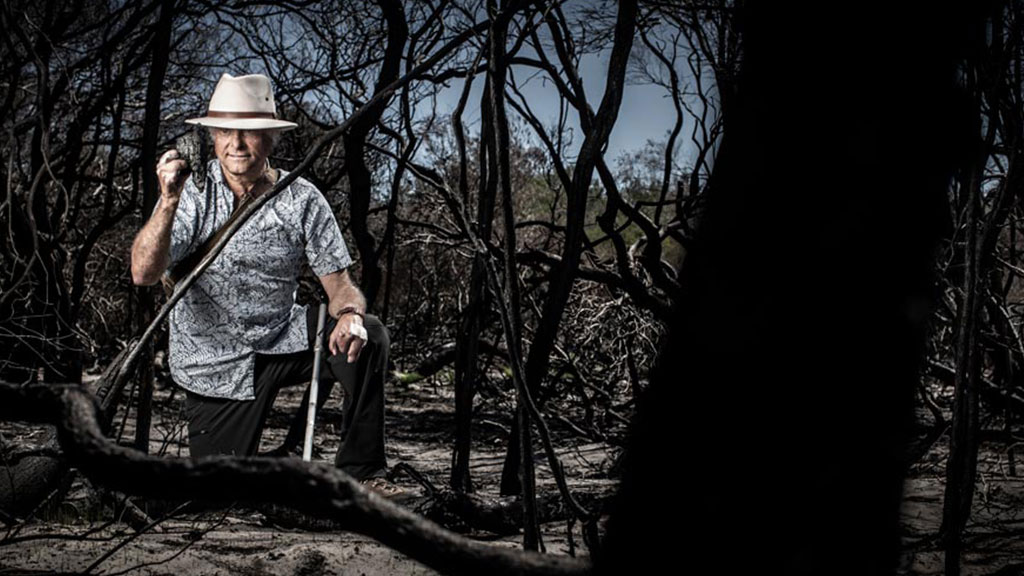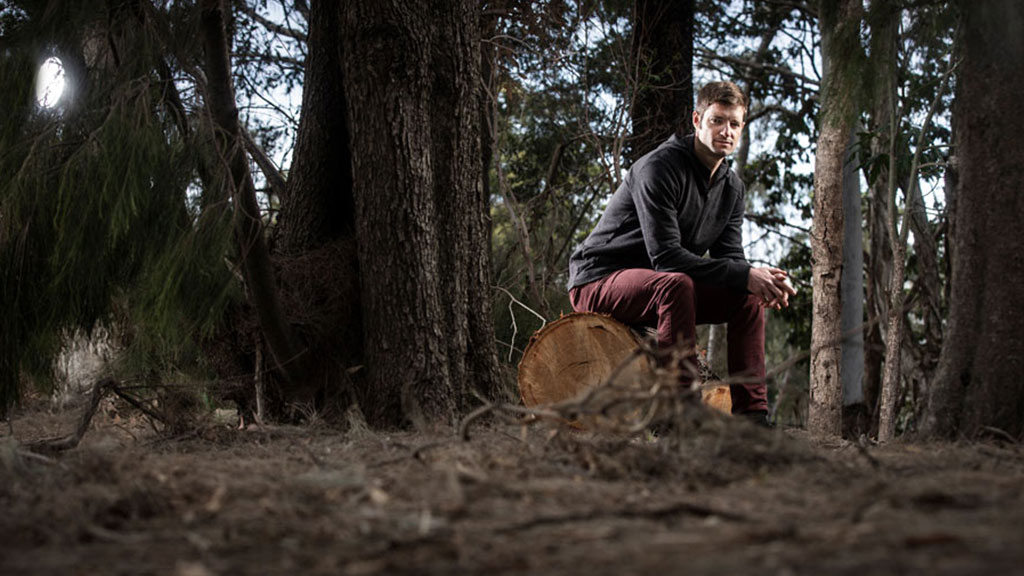Fuelling the fire
Seasonally earlier and more intense fires are the face of climate change, warn ecologists.
November 13, 2018
It’s time now to take control and cut emissions into the atmosphere as our forests are resilient – to a point.
With siren sounds in the distance, and drought permeating New South Wales, bushfires blaze across the state. Total fire bans have been enforced, the earliest on record for the region, with dry conditions forecast for months. Beneath it all, temperatures are rising.
"What you're seeing is the face of climate change," says fire ecologist Professor Ross Bradstock, Director of the Centre of Environmental Risk Management of Bushfires. "Everything that we're seeing now is consistent with our projections. It's a preview."
The new normal is a bushfire season that starts earlier and burns longer, with more frequent and intense fires to come, and while we are grappling with the immediate destruction, trying to control the blaze, our forests are adapting. Fires have shaped the temperate eucalypt forests of southeast Australia and will continue to shape their future - the question is, how will more forest fires affect our future?
Yet to break our dependence on fossil fuels or cut greenhouse gas emissions, we bank on fast-growing forests to capture carbon from the atmosphere and sequester it deep in the soil. However, bushfires can release large amounts of carbon stored in plant material back into the atmosphere in a flash.
When we need to be pulling carbon dioxide from the atmosphere not adding to it, will fire tip the system towards an irreversible future - with the added emissions from fires accelerating climate change - or can we take control?
The natural element
Professor Bradstock and his colleagues set out to find the answer to that question. What they found was unexpected, and even more alarming. As a fire ecologist, he has, for 40 years, traced the passage of fire through forests and its effect on vegetation.
Most recently, he has been working with Senior Research Fellow Dr Chris Gordon to investigate the amount of carbon stored in forest vegetation. "There are concerns about the carbon stock of forests and its sensitivity to fire, and ultimately, climate," Professor Bradstock says.
In the dry sclerophyll forests that run down the south-east coast of Australia and surround Sydney, bushfires are a natural disturbance. These forests are globally unique, forged by fire which returns on average every 15 years. In response, the towering trees and shrubby undergrowth have developed traits which allow them to cope and regenerate following fire.
Dry sclerophyll forests are characterised by their diverse flora which has evolved through exposure to fire: "The Sydney Basin is the most diverse place in the world for Eucalyptus trees," Dr Gordon says.

Fire ecologist Professor Ross Bradstock has for 40 years traced the passage of fire through forests and its effect on vegetation.
"There are 50-odd tree species and more than 200 unique species of shrub and herbs in these areas. Most of the plants have developed strategies to deal with fire in these landscapes."
Following fire, many species of trees and shrubs can resprout from buds within their charred bark and stems, which means not all the carbon stored in them is lost and the plants regrow quickly. "Within three to five years that tree will have a complete canopy like it was before the fire. Only very extreme fires would kill those resprouting species."
"Other species, the obligate seeders, regenerate from seeds held in the canopy or the soil. It might take seven years for those plants to reach maturity and drop their seeds," he says, making them more vulnerable to frequent fires.
Just as fire has influenced forests in the past, it will also shape their future. Patterns of fire stoked by a warmer, drier climate could transform the vegetation profile in forests with high intensity or more frequent fires favouring certain species which store more or less carbon.
At the same time, we are meddling with fire, attempting to manipulate fire regimes for our benefit - with little understanding of how this could change the carbon balance.
Fighting fire with fire
The proactive use of fire under controlled conditions is widely implemented across Australian landscapes to prevent severe bushfires. Fires are deliberately lit to remove hazardous bushland fuel - the leaf litter and woody debris that accumulates on the forest floor - and create firebreaks.
As a fire management strategy, prescribed burning is a trade-off: burning now, in theory, reduces the intensity and extent of later unplanned bushfires that will burn longer. Low intensity burns also unavoidably release emissions as any fire would, but hopefully less than a larger bushfire.
It has been proposed that in this way prescribed burning may actually reduce net emissions from forest fires as low-intensity controlled burns may safeguard against bushfires and the loss of large trees which hold over two thirds of the above ground carbon in forests.
Fires may also preserve some carbon as charcoal when plant material does not burn completely. Added to soil, this pyrogenic carbon, a long-lived form of carbon resistant to decomposition, could be locked up for millennia.

PhD candidate Robert Sawyer set out to measure the pools of carbon above and below ground in the fire-prone forests surrounding Sydney.
"Fire management has been touted as one of the things that could change the carbon storage potential of forests and offset our human carbon emissions," Professor Bradstock says.
But every forest is different. What can be said for forest fires in North America and Europe, or even tropical savannas in the Northern Territory, does not necessarily apply to the temperate eucalypt forests of New South Wales.
"We pull the levers of fire management hoping that they have an effect," he says. "But our understanding of those effects is quite rudimentary. We have virtually no idea what we get back on the effort [and emissions] we outlay."
To resolve this, the Centre for Environmental Risk Management of Bushfires has been evaluating the effectiveness of prescribed burning by area burnt.
Meanwhile, Professor Bradstock, Dr Gordon and PhD candidate Robert Sawyer set out to measure the pools of carbon above and below ground in the fire-prone forests surrounding Sydney, while risk programmer Michael Bedward crunched the numbers. Without measurements from the field, they argue we might be underestimating the effect of fire on these carbon stocks.
Combustible carbon
Carbon is cycled between the land and the air by forests as they grow, decompose or burn. Carbon can be sequestered in the soil or released back into the atmosphere.
"While seemingly simple when you draw the carbon cycle on a whiteboard, it has been enormously challenging to actually measure," Professor Bradstock says.
Fire does not act alone, although the effects of climate on carbon storage and recycling are subtle. The same dry conditions that are conducive to fire also alter forest carbon by limiting plant growth while warmer temperatures drive the decomposition of plant material, releasing carbon.
Dr Gordon says that in cooler climates there is more carbon sequestering in the forest. "In warmer forests, the relative rate of decomposition is greater so less carbon is stored overall than when forests are cooler."
All of this must be taken into account to disentangle the concurrent effects of climate and fire severity on carbon storage in forests - to understand how our forests will respond now and in the future.
At more than 100 study sites that reflected gradients in climate in dry sclerophyll forests surrounding Sydney, Dr Gordon measured the carbon held in trees, shrubs, woody debris and ground litter.
Overlaying patterns of fire intensity and frequency across four decades measured retrospectively from satellite images, Dr Gordon was able to explore how these forests are likely to respond to both prescribed burn-offs and bushfires under a changing climate.
"We predicted that with very high severity fires you would get a reduction in the amount of carbon held within the large trees and that total above ground carbon would be greatest in cool, dry climates," Dr Gordon says.
But the carbon dynamics of these forests were not greatly affected by the passage of fire. Forests could have been affected by low intensity burns or severe bushfires but 10 years after the last fire, the total amount of above ground carbon had not changed.

Dr Chris Gordon's research is disentangling the concurrent effects of climate and fire severity on carbon storage in forests.
"Fire has no effect in this landscape. We found that fire frequency and severity did not influence above ground carbon storage 10 to 12 years after a fire and that's probably because these forests are so well adapted to fire," Dr Gordon says.
It suggests to researchers that manipulating fire regimes for any supposed carbon benefit will have little effect. Climate tells a different, sobering story: "Temperature by far has the strongest effect," Dr Gordon says.
Less carbon was stored in the vegetation as average annual temperatures increased. When Dr Gordon applied the likely temperature increase predicted for the region by 2070 to his models, he found that more than 20 per cent of the carbon stored in these dry sclerophyll forests could be lost - from intact vegetation.
It was a frightening result and a similar story was unfolding underground.
What lies beneath
The hidden stores of carbon buried in the soil can exceed the amount of above ground carbon, and are likewise affected by fire and climate.
Fires deposit charcoal and ash which could boost soil carbon if not consumed by subsequent fires but high intensity bushfires also leave soils more prone to erosion from the loss of vegetation, and denuded of microbes that break down plant material. Temperature and rainfall affect soil microbe activity and plant productivity, releasing carbon or adding to soil carbon stocks.
PhD soil scientist Robert Sawyer looked first at the long-term effects of fire in dry sclerophyll forests, which showed that stocks of soil carbon were stable a decade after fire, either bushfire or prescribed burn. Other studies that reported an accumulation of carbon in soil following prescribed burns had only compared soil carbon directly before and after fire.
"People are advocating for fire management strategies based on comparisons of carbon directly before and after fires and they're making assumptions," says Professor Bradstock. "We wanted to look at the deeper consequences."
Adding temperature and rainfall to their latest survey, Professor Bradstock and Dr Sawyer (who graduated in October 2018) considered the effect of fire alongside climate. Soil sampling across the Sydney Basin, from the Central Coast to the Blue Mountains - regions with similar rainfall but differing in annual temperatures and affected by fire to different degrees - revealed the sensitivity of soil carbon in dry sclerophyll forests to rising temperatures.
"The climate is a much bigger influence on the amount of carbon in the soil than anything we could detect relating to changes in fire regimes," Dr Sawyer says. "Fire severity and frequency had no direct measurable effect on soil carbon, either pyrogenic or total carbon, 10 to 12 years since fire."
"Higher temperatures are going to drive the release of carbon, promoting the decomposition of organic matter by soil microbes. In warmer climates, that process is fairly constant year-long and doesn't diminish hugely over winter. If we don't mitigate climate change and temperatures increase as predicted, we could potentially have more carbon go to the atmosphere from those soils," he warns.

Fire creates charcoal, which helps distribute carbon into the soil.
Time to take control
Professor Bradstock admits that these results lead to a difficult conversation: "This tells you even if we keep native vegetation, we're going to lose an enormous amount of carbon. You could say the loss of carbon due to increasing temperatures that we could predict from these studies is almost hardwired now."
Our forests are resilient but only to a point. "It could well be that the temperature effect manifests in the conjunction of drought and fire that pushes the plants' ability to cope over the edge," Professor Bradstock says.
"Intense fires burning on top of a mega drought - that's when the resilience of these forests could fall apart."
Forest fires and climate are undeniably linked but neglecting the root cause of climate change will only make that dire future more likely. We need to take control of our emissions, Professor Bradstock says.
"So much of the business about climate change is thinking you can come up with alternative solutions to cutting emissions from fossil fuels. Sorry, but there are no free lunches here. There are no easy solutions."
Professor Bradstock has a clear message. While we are holding out for another solution, our world warms and yet the answer remains the same - cut emissions and renounce fossil fuels.
Forests can adapt to changing fire regimes - but not if the system is pushed past its tipping point.